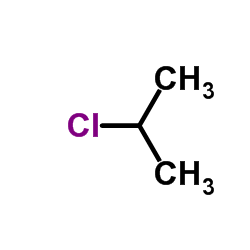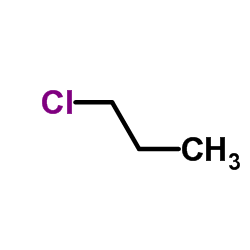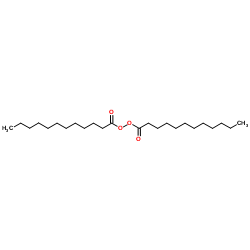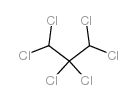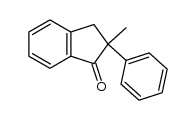598-77-6
| 中文名 | 1,1,2-三氯丙烷 |
|---|---|
| 英文名 | 2-Chloropropylidene Chloride |
| 英文别名 |
EINECS 209-951-8
1,1,2-trichloropropane |
| 密度 | 1.305g/cm3 |
|---|---|
| 沸点 | 125.3ºC at 760mmHg |
| 分子式 | C3H5Cl3 |
| 分子量 | 147.43100 |
| 闪点 | 44.3ºC |
| 精确质量 | 145.94600 |
| LogP | 2.41740 |
| 折射率 | 1.45 |
| 储存条件 | 贮存: 将密器密封,储存密封的主藏器内,并放在阴凉, 干爽的位置。 |
| 稳定性 | 性质与稳定性: 常温常压下,或不分解产物。 |
| 分子结构 | 五、分子性质数据: 1、 摩尔折射率:30.41 2、 摩尔体积(cm3/mol):112.9 3、 等张比容(90.2K):261.6 4、 表面张力(dyne/cm):28.7 5、 极化率(10-24cm3):12.05 |
| 计算化学 | 四、计算化学数据: 1、 疏水参数计算参考值(XlogP):2.6 2、 氢键供体数量:0 3、 氢键受体数量:0 4、 可旋转化学键数量:1 5、 拓扑分子极性表面积(TPSA):0 6、 重原子数量:6 7、 表面电荷:0 8、 复杂度:35 9、 同位素原子数量:0 10、 确定原子立构中心数量:0 11、 不确定原子立构中心数量:1 12、 确定化学键立构中心数量:0 13、 不确定化学键立构中心数量:0 14、 共价键单元数量:1 |
| 更多 | 一、物性数据 1. 沸点:132℃。 2、相对密度:1.35(19℃)。 3. 相对密度(20℃,4℃):1.372 4. 相对密度(25℃,4℃):1.337 5. 常温折射率(n20):1.480 6. 常温折射率(n25):1.482 |
|
Section I.Chemical Product and Company Identification Chemical Name 1,1,2-Trichloropropane Portland OR SynonymPropane, 1,1,2-trichloro- (CA INDEX NAME); 2-Chloropropylidene Chloride Chemical FormulaC3H5Cl3 CAS Number598-77-6
Section II.Composition and Information on Ingredients Toxicology Data Chemical NameCAS Number Percent (%)TLV/PEL Min. 96.0 (GC) Not available.Rat LD50 (oral) 1230 mg/kg 1,1,2-Trichloropropane598-77-6 Rabbit LD50 (dermal) 14100 uL/kg Section III. Hazards Identification Harmful if ingested or inhaled. Minimize exposure to this material. Severe overexposure can result in injury or death. Acute Health Effects Irritating to eyes and skin on contact. Inhalation causes irritation of the lungs and respiratory system. Inflammation of the eye is characterized by redness, watering, and itching. Skin inflammation is characterized by itching, scaling, reddening, or, occasionally, blistering. Follow safe industrial hygiene practices and always wear proper protective equipment when handling this compound. CARCINOGENIC EFFECTS : Not available. Chronic Health Effects MUTAGENIC EFFECTS : Not available. TERATOGENIC EFFECTS : Not available. DEVELOPMENTAL TOXICITY: Not available. Repeated or prolonged exposure to this compound is not known to aggravate existing medical conditions. Section IV.First Aid Measures Eye ContactCheck for and remove any contact lenses. In case of contact, immediately flush eyes with plenty of water for at least 15 minutes. Get medical attention. Skin ContactIn case of contact, immediately flush skin with plenty of water. Remove contaminated clothing and shoes. Wash clothing before reuse. Thoroughly clean shoes before reuse. Get medical attention. InhalationIf the victim is not breathing, perform mouth-to-mouth resuscitation. Loosen tight clothing such as a collar, tie, belt or waistband. If breathing is difficult, oxygen can be administered. Seek medical attention if respiration problems do not improve. IngestionINDUCE VOMITING by sticking finger in throat. Lower the head so that the vomit will not reenter the mouth and throat. Loosen tight clothing such as a collar, tie, belt or waistband. If the victim is not breathing, perform mouth-to-mouth resuscitation. Examine the lips and mouth to ascertain whether the tissues are damaged, a possible indication that the toxic material was ingested; the absence of such signs, however, is not conclusive. Section V.Fire and Explosion Data Auto-IgnitionNot available. FlammabilityCombustible. Flammable LimitsNot available. Flash PointsNot available. Combustion ProductsThese products are toxic carbon oxides (CO, CO2), halogenated compounds. WARNING: Highly toxic HCl gas is produced during combustion. Fire HazardsNot available. Risks of explosion of the product in presence of mechanical impact: Not available. Explosion Hazards Risks of explosion of the product in presence of static discharge: Not available. Fire Fighting Media SMALL FIRE: Use DRY chemical powder. LARGE FIRE: Use water spray, fog or foam. DO NOT use water jet. and Instructions Consult with local fire authorities before attempting large scale fire-fighting operations. Continued on Next Page 1,1,2-Trichloropropane Section VI.Accidental Release Measures Spill CleanupCombustible material. Harmful material. Irritating material. Keep away from heat. Mechanical exhaust required. Stop leak if without risk. Finish cleaning the spill by rinsing any Instructions contaminated surfaces with copious amounts of water. Consult federal, state, and/or local authorities for assistance on disposal. Section VII. Handling and Storage COMBUSTIBLE. HARMFUL. IRRITANT. Keep away from heat. Mechanical exhaust required. Avoid excessive heat and Handling and Storage light. Do not breathe gas/fumes/ vapor/spray. Information Always store away from incompatible compounds such as oxidizing agents. Section VIII. Exposure Controls/Personal Protection Provide exhaust ventilation or other engineering controls to keep the airborne concentrations of vapors below their respective Engineering Controls threshold limit value. Ensure that eyewash station and safety shower is proximal to the work-station location. Splash goggles. Lab coat. Vapor respirator. Boots. Gloves. Suggested protective clothing might not be sufficient; consult a Personal Protection specialist BEFORE handling this product. Be sure to use a MSHA/NIOSH approved respirator or equivalent. Exposure LimitsNot available. Section IX. Physical and Chemical Properties Liquid. (Clear, colorless.)Solubility Physical state @ 20°CNot available. 1.35 (water=1) Specific Gravity Molecular Weight147.43Partition Coefficient Not available. Boiling Point133°C (271.4°F)Vapor PressureNot available. Not available.Not available. Melting PointVapor Density Refractive Index1.4670 - 1.4700VolatilityNot available. Not available.Not available. Critical TemperatureOdor ViscosityNot available.TasteNot available. Section X.Stability and Reactivity Data This material is stable if stored under proper conditions. (See Section VII for instructions) Stability Conditions of InstabilityAvoid excessive heat and light. Incompatibilities Reactive with oxidizing agents. Section XI. Toxicological Information TZ8925000 RTECS Number Eye Contact. Ingestion. Inhalation. Routes of Exposure Rat LD50 (oral) 1230 mg/kg Toxicity Data Rabbit LD50 (dermal) 14100 uL/kg CARCINOGENIC EFFECTS : Not available. Chronic Toxic Effects MUTAGENIC EFFECTS : Not available. TERATOGENIC EFFECTS : Not available. DEVELOPMENTAL TOXICITY: Not available. Repeated or prolonged exposure to this compound is not known to aggravate existing medical conditions. Harmful if ingested or inhaled. Minimize exposure to this material. Severe overexposure can result in injury or death. Acute Toxic Effects Irritating to eyes and skin on contact. Inhalation causes irritation of the lungs and respiratory system. Inflammation of the eye is characterized by redness, watering, and itching. Skin inflammation is characterized by itching, scaling, reddening, or, occasionally, blistering. Follow safe industrial hygiene practices and always wear proper protective equipment when handling this compound. Section XII.Ecological Information EcotoxicityNot available. Environmental FateNot available. Continued on Next Page 1,1,2-Trichloropropane Section XIII. Disposal Considerations Waste DisposalRecycle to process, if possible. Consult your local regional authorities. You may be able to dissolve or mix material with a combustible solvent and burn in a chemical incinerator equipped with an afterburner and scrubber system. Observe all federal, state and local regulations when disposing of the substance. Section XIV. Transport Information DOT ClassificationNot a DOT controlled material (United States). PIN NumberNot applicable. Proper Shipping NameNot applicable. Packing Group (PG)Not applicable. DOT Pictograms Section XV. Other Regulatory Information and Pictograms TSCA Chemical InventoryThis compound is ON the EPA Toxic Substances Control Act (TSCA) inventory list. (EPA) WHMIS ClassificationCLASS B-3: Combustible liquid with a flash point between 37.8°C (100°F) and 93.3°C (200°F). On NDSL (Canada) EINECS Number (EEC) 209-951-8 EEC Risk StatementsR20/21/22- Harmful by inhalation, in contact with skin and if swallowed. R36/37/38- Irritating to eyes, respiratory system and skin. SECTION 16 - ADDITIONAL INFORMATION N/A |
|
生态学数据: 三、生态学数据: 1、其它有害作用:该物质对环境可能有危害,对水体应给予特别注意。 CHEMICAL IDENTIFICATION
HEALTH HAZARD DATAACUTE TOXICITY DATA
|
| 风险声明 (欧洲) | 20/21/22-36/37/38 |
|---|---|
| 安全声明 (欧洲) | S26;S36/S37/S39 |
| 上游产品 9 | |
|---|---|
| 下游产品 7 | |



